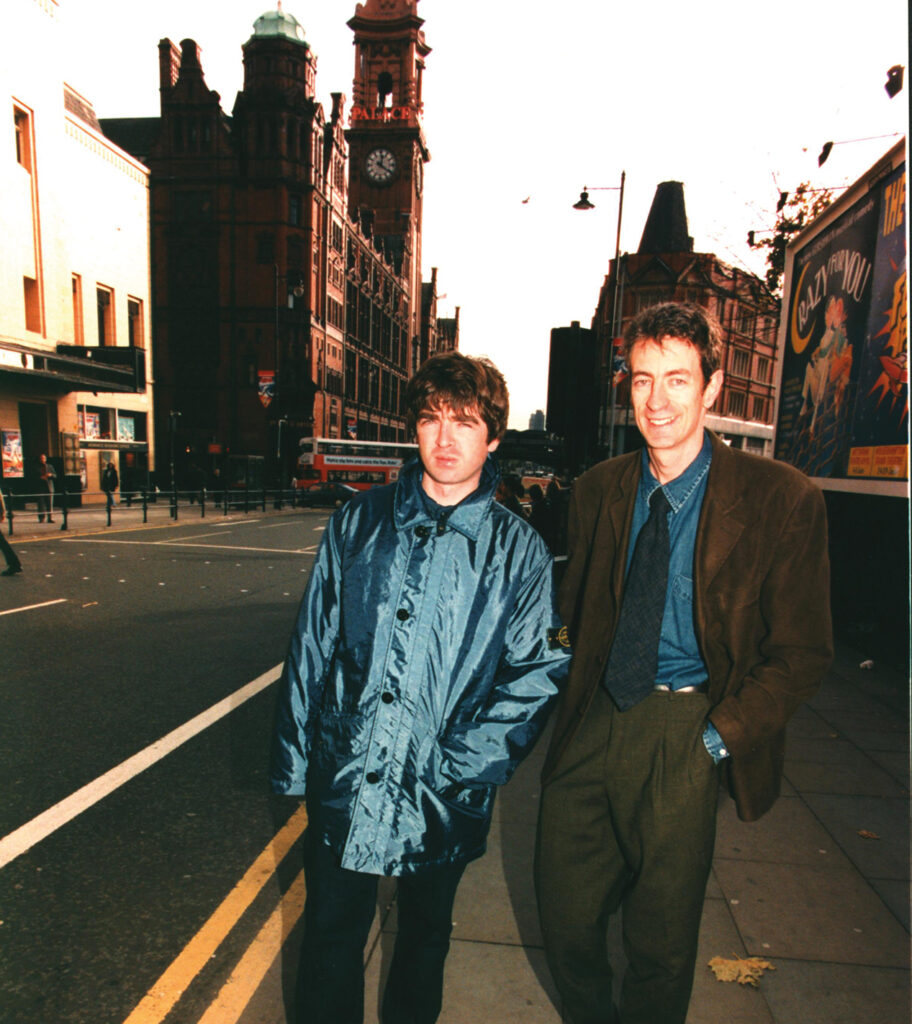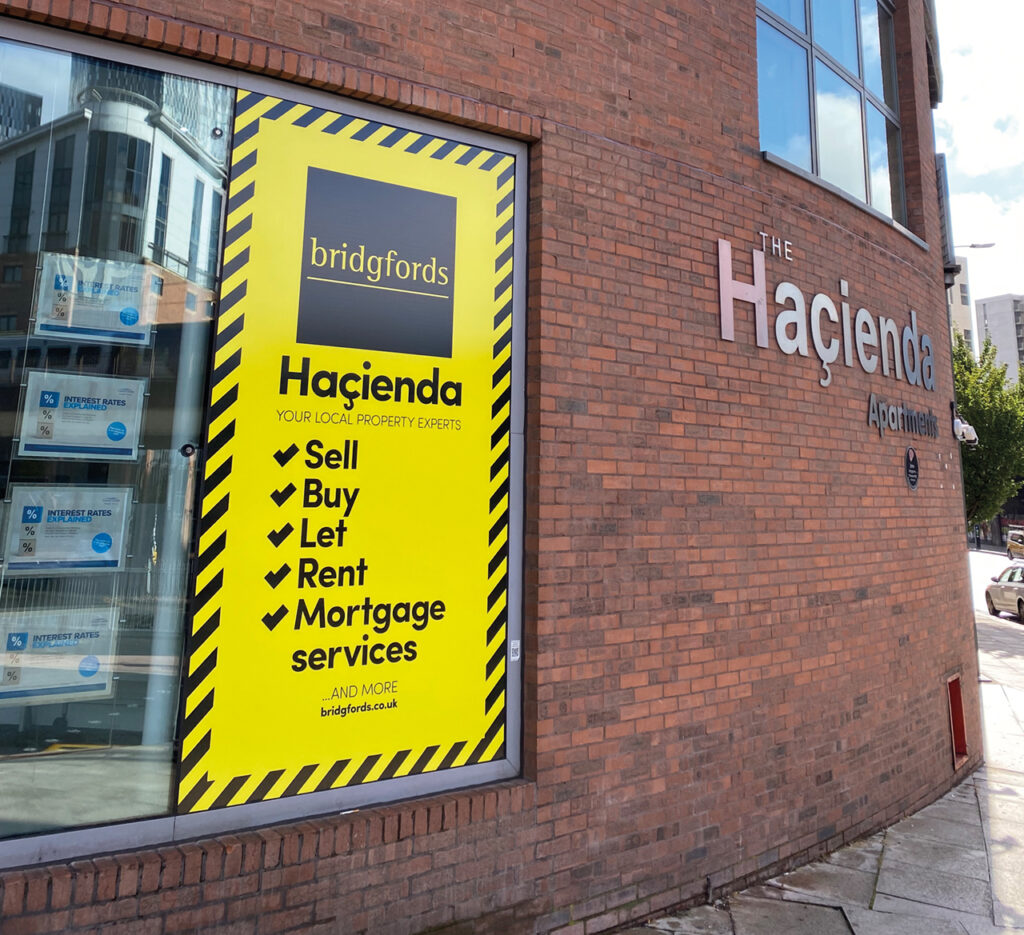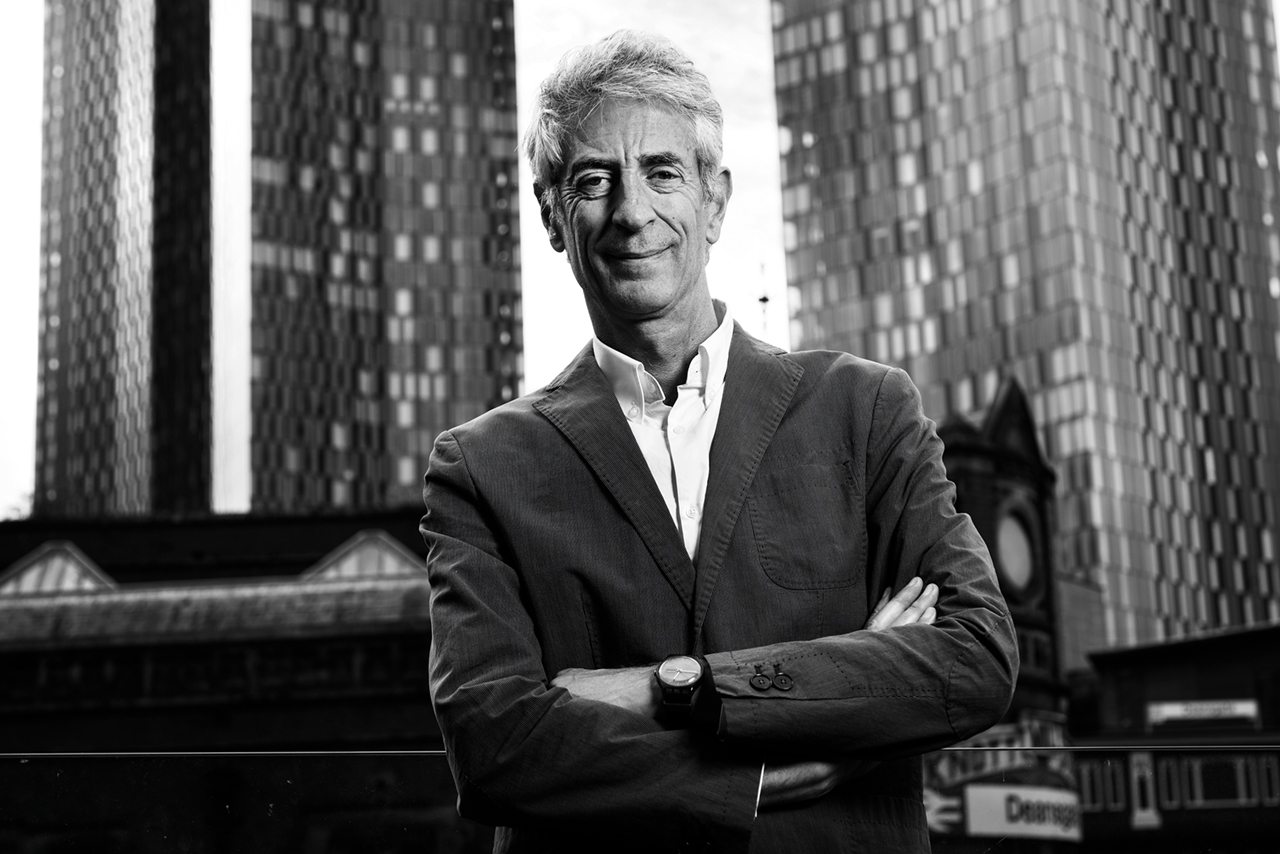Spinning around
Manchester Unspun author Andy Spinoza has been close to the action throughout incredible change in the city across 40 years
There are tons of books on Manchester music, and quite a few on the physical changes the city’s seen. But never before in print has anyone explored with such depth and breadth just how you explain the Manchester story post-1980 and the personalities who drove it.
Nowhere else can a fusion of pop, politics and property tell the story of a city’s reinvention – how, to use one of the many deft turns of phrase by Andy Spinoza, a city that had been a “classic Fordist producer of goods and machinery became a manufacturer of iconic imagery”.
“You want to celebrate your heritage, but you don’t want to stop new things happening.”
There aren’t many people better placed than Spinoza to tell this story. As a Londoner who arrived in the late 1970s as a student, he co-founded City Life magazine before landing a job at the Manchester Evening News at a time when ideas on how Manchester might find a new direction were coming together.
Where from? To name three: the Graham Stringer-led town hall, pragmatically concluding in 1987 it would play ball with the Conservative government; in the Gay Village, with the unsung Carol Ainscow and the Central Manchester Development Corporation key players; and of course in the orbit of Factory Records and the Hacienda.
The 1990s famously saw Manchester bid for the Olympics, learning much in the process and starting to seek every funding pot available. The rebuilding after the 1996 IRA bomb became an opportunity to advance further.
Spinoza crossed over into the world of PR in the late 1990s, and this breadth of experience makes him empathetic both to the creative spirits and spirit alive in the city and to the economic and political realities of regenerating a post-industrial city in a centrally controlled nation like the UK.
Over a 40-year span, he’s worked at close quarters with the powerful and seen the rise of any number of upstart thinkers and doers. There’s thoughtful insight into them all, from Tony Wilson through to Gary Neville by way of Sirs Richard Leese and Howard Bernstein.
“I’d like to think I’ve told stories here that haven’t really been told before, and given a fresh spin to things,” he tells Big Issue North. “Plenty has been said and written about the Hacienda, but the tendency has been to reduce it to a cartoonish version of Manchester, and the original intentions of the Factory-Hacienda project have been lost.”
Indeed, the book’s closing chapter’s title is Intention: To Restore a Sense of Place, the mission as stated on the club’s membership forms. Spinoza says: “I think we can view it as an act of political resistance as well as a cultural celebration. The importance of a sense of place was at the heart of the Hacienda project.”
The struggling early years, when Tony Wilson’s credo was to bring together the “interesting people”, are as important as the rave years, Spinoza suggests.
Those peak years though, during and after acid house, perhaps explain more the recurring theme of Mancunian exceptionalism. In various ways, post-rave Manchester has consistently hitched its wagon to cool. In Birmingham and Leeds, people don’t use phrases like “rock star developer”.
The tale of how Urban Splash co-founder Tom Bloxham rose from selling posters at Affleck’s Palace to pioneering aspirational city living has been told before, but Spinoza illustrates how Bloxham also became “Manchester’s king of soft power”, moving in influential circles, connecting people.
Bloxham was one of a cluster of creative types who in the late 1990s, challenged as beyond naff the city’s “Up and Going” slogan, launched with some expense in 1997.
Formally and informally, the people involved (the McEnroe Group, as in “You cannot be serious!”) and those like them began to influence a city leadership savvy enough to see the edge this could give them over municipal rivals still ruled by fusty committees.
A good example is Colin Sinclair, who went from running the Boardwalk and managing bands to heading the city’s inward investment agency Midas. In Sinclair, the city’s suits saw a capable guy with different ideas, someone not quite like them but also a safer pair of hands than most in the shady world of nightclubs.
It’s good to see bandwidth being used to look at the gay and black parts of the story, something under-told in the elevator-pitch Manchester story. Spinoza recounts how in the 1980s, Manchester City Council’s supportiveness led several people to relocate to the city, council staff who’d been afraid to come out in their home cities, creating an environment where the Gay Village could flourish – an early win for Manchester.
There’s also a nod here to oft-forgotten staples Mancs of a certain age will remember fondly, such as the radio station Sunset 102. Figures in food, fashion and other fields are given due credit too.
At the heart of it too is the fact that the records endure. As Spinoza comments (specifically regarding a gallery show of record sleeves) “no other city’s music could claim such a sense of community and atmosphere”. People all over the world still love these records.
And yet for Manchester’s undoubted successes, with property values soaring like its glitzy Ian Simpson-designed towers, the city has continued to score poorly on vital areas: child poverty, life expectancy, wage growth, productivity in “tradable sectors”. Spinoza has concerns.
“This book isn’t a polemic, and I’m not trying to rip the veil off or anything. But it is important to shed light on how a city is being transformed. People feel powerless and perplexed by radical change when there hasn’t been a coherent, transparent case made for it. The perception is that decisions are made behind closed doors, whatever any ‘consultation process’ says.”
To use a football term, Spinoza’s insights into town hall politics are worthy of the entrance fee alone. Chief executive Bernstein’s furious rant when Manchester lost out to Peel-backed Salford Quays’ bid to house the BBC relocation in 2006 is eyebrow-raising, while Spinoza’s ruminations on the complexities of long-term leader Leese, a divisive, often spiky figure, are fascinating.
He’s more sympathetic to Leese than many, including the Manchester Business School report that questioned the “urban monoculture of private rented blocks” and accused the city of running a 30-year exercise in neoliberalism in plain sight. That’s strong stuff, and Spinoza draws an interesting parallel with Salford mayor Paul Dennett’s seeming willingness to more quickly translate receipts from high-end development into social housing.

Had Manchester done better on the affordability aspect, Spinoza says, “we might be saying the city centre renewal has been an unmitigated success – as it is, there’s still a long way to go in spreading the benefits”. He continues: “What is notable though, is that the new city leadership [Joanne Roney took over from Bernstein as chief executive in 2017, Bev Craig succeeded Leese as leader in 2021] haven’t changed anything radically. The pro-development tendency is ingrained in city council politics.”
Spinoza repeatedly shows that this staunchly Labour city has worked far more effectively with Conservative politicians than the national Labour Party. From Michael Heseltine in the 1980s through to George Osborne driving through its devolution deal with “raw Treasury muscle exercised on behalf of Manchester”, Leese and co found willing Tory partners. It may be an issue for metro mayor Andy Burnham to ponder.
In recent years, Manchester has worked globally to keep the regeneration wheels turning. Abu Dhabi United Group dominates in inner east Manchester, while Far East Consortium is leading the Victoria North £5 billion masterplan covering housing in areas like Collyhurst and Red Bank, a project that at least finally looks to be doing more for “ordinary” Mancunians.
As for the creative side, Spinoza wonders whether climbing rents have seen off those trying new ideas, telling the story of artists evicted from Crusader Mill. How long can the city get by on plastering yellow and black hazard stripes and song lyrics from 30-year old records all over cafes and offices?
Without labouring the point, Spinoza recounts Wilson’s own distaste at wallowing in nostalgia and clinging to “rock and roll ephemera”. He refers to that cringe-inducing tendency to trot out a line Wilson may or may not have used, “we do things differently here”, as a “Mancunian dog-whistle exploited by politicians and bureaucrats, a mantra deployed both as a badge of civic pride and as a woolly people-pleasing slogan”.
How serious an issue is this? “It’s a tricky thing to pull off, because you want to celebrate your heritage, but you don’t want to stop new things happening. It’s why I’m interested in the new Mancunians – the city is broader than bands started by the sons of Irish immigrants now.” Among those interviewed for the book is Adex: black, German-born of Nigerian and Liberian parents, an entrepreneur who heads the NQ talent and entertainment company in east Manchester.
With the Manchester International Festival set to move into its eye-wateringly expensive new home, Spinoza repeats a point made in the book that right now £600 million is being spent across three venues: £210 million on the Factory, the £350 million Co-op Live at Eastlands and £50 million on renovating the AO Arena.
“You could say Manchester’s betting the house on the arts and culture, spending £600 million in these large venues. It does make people of my generation feel the city’s lost some charisma, but equally people could say that back then, the city was on its arse. You feel conflicted – it’s great that the future has arrived, but who’s getting the benefit?”
With a cool eye and a journalist’s disposition, Spinoza has written an outward-looking book. When the personal does come into it – brief details of his upbringing, his own sense of place and the thinking that underpinned his career moves – it’s insightful and moving.
Of the book, he says: “Hopefully people read it who don’t know much about Manchester’s recent history beyond Shaun and Bez. The interaction of pop, property and politics is one thing that makes Manchester unique.”
There is indeed much here for younger people who’ve wondered how, to use that dreaded term, Manchester did things differently, and also for those who fancy a reminder of how it all came together, not to mention the forgotten folk, the stillborn projects and idle fantasies, the could-have-beens.
As we speak, developer Renaker has tabled plans for a 71-storey tower, topping the Beetham Tower (PR-launched by Spinoza in 2006) by 24 floors. He describes that landmark project as “a gigantic come-on, a huge beckoning finger for developers”. It certainly ushered in an era of dizzying development, and we’re yet to know how that ends. But at least we have this record of how it all began.
Manchester Unspun by Andy Spinoza is published by Manchester University Press

The politicos and creatives don’t agree on everything. While ex-council leader Sir Richard Leese tells Spinoza the city’s rebirth “would have happened without Factory”, not all agree.
Design guru Peter Saville – Factory record sleeve designer turned “original, modern” brand impresario – says: “Modern Manchester stands in part on the sacrifice made by Ian Curtis. His untimely death was the capital investment in Factory Records and that which has followed on as a consequence of Factory.”
Certainly, the money made through sales of Joy Division’s Closer (250,000 copies by 1982) gave Factory the means and confidence to get the Hacienda up and running.
Subsequently, New Order’s successes made the band a cash machine whenever the club and label were struggling, with the ensuing resentment being well-documented (in a lovely Spinoza phrase, Peter Hook became “an enthusiastic monetiser of the allure around the Hacienda and Factory”, albeit with undoubted justification).
Into the 1990s, and the global success of Mick Hucknall also played a major role in regeneration, he and business manager Andy Dodd backing the development of the Malmaison hotel close to Piccadilly – a pioneer in smartening this crucial gateway to Manchester – and, subsequently, projects including Deansgate Locks, in its time a groundbreaking leisure destination.
The big music names that came later have, at most, dabbled with investment in the city. But property values have made the entry level higher, which in part shows how, a generation on, these seed investments moved the city on.

Leave a reply
Your email address will not be published.